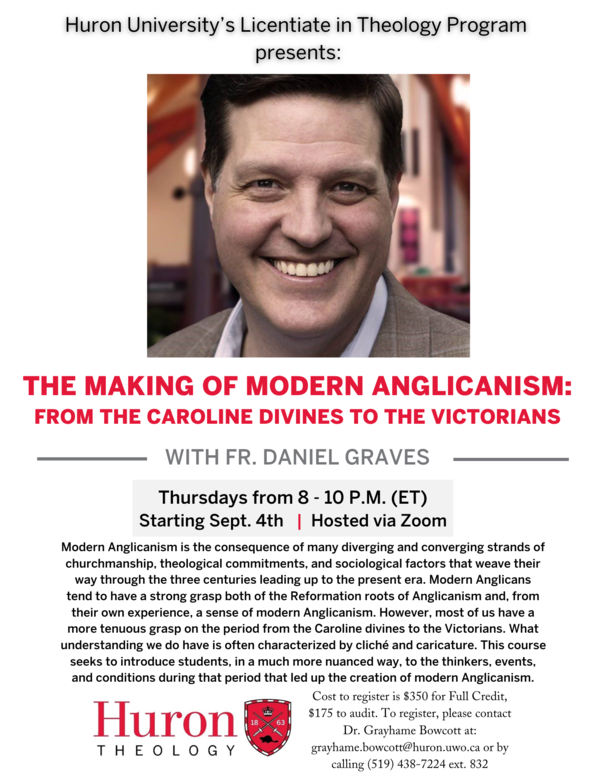
Course Description
Modern Anglicanism is the consequence of many diverging and converging strands of churchmanship, theological commitments, and sociological factors that weave their way through the three centuries leading up to present era. Modern Anglicans tend to have a strong grasp both of the Reformation roots of Anglicanism and, from their own experience, a sense of modern Anglicanism. However, most of us have a more tenuous grasp on the period from the Caroline divines to the Victorians. What understanding we do have is often characterized by cliché and caricature. This course seeks to introduce students, in a much more nuanced way, to the thinkers, events, and conditions during that period that led up the creation of modern Anglicanism.
Anthony Milton has called the time leading up to the English Civil war ‘England’s Second Reformation’. The conflict in the second quarter of the seventeenth century between Laudian high-churchism and an ascendant puritanism was characterized by a battle over who owns the past. Was the English Reformation a break from the past or does the English church stand in continuity with its past. Both sides claimed a continuity with the primitive church, but what is meant by ‘primitive church’ to each party?
Following the Commonwealth period, at the Restoration and into the so-called ‘long eighteenth century’, hopes ran high for ‘comprehension’, that is, inclusion of and concession for the forms of churchmanship that were in conflict from the time of the Elizabethan settlement through the civil war. These hopes were not fully realized, some might even say dashed, to be replaced by the tension of the penal laws and reluctant degrees of toleration of emerging non-conforming sects. Running parallel to the emerging political strands of Toryism and Whigism, strands of religious partisanship began take shape. The old Puritan strand began to stand outside the Established Church in the form of non-conforming, independent and separatist sects, the Restoration Establishment settled into a high-church Anglicanism (or what we might call ‘old High Church’ today), and a stream of rationalist, low-church liberal, or latitudinarian Christianity. A more advanced stream of rationalism wedded to a strict biblicism led to the emergence of heterodox theological non-Trinitarian convictions that sat uneasily more orthodox conformists. However, the conforming groups perhaps held more in common and their differences were more blurred and malleable than the partyism (Tractarian, Evangelical, and Broad-churchism) that emerged in the Victorian period.
The course will also look at the origins of global Anglicism in the proliferation of missionary societies, and eventually the creation of the ‘Anglican Communion’.
